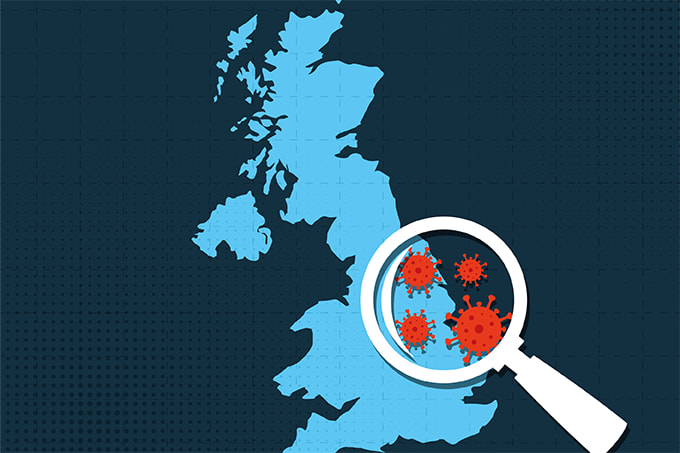As of March 24th, 2022, the US has reported over 81 million COVID-19 cases. As the disease continues to spread, it is increasingly essential to obtain up-to-date sequencing data to trace emerging variants. Viruses are always evolving – and SARS-CoV-2 is no different. These changes occur over time, bringing with them new variants such as Delta and Omicron – both of which are currently considered variants of concern in the US. And who knows what evolutionary adaptations may arise next?

The ability to detect and monitor various SARS-CoV-2 strains quickly and accurately can provide crucial data on early signals of new variants, as well as variant-specific information on symptoms, hospitalization rates, death rates, age distribution of positive cases, and disease spread. For example, the Washington State Department of Health recently released a comprehensive study on SARS-CoV-2 sequencing and variants (1). Public health officials could use this information to determine disease patterns and track occurrences – helping scientists to swiftly identify epidemics and limit the spread of illness.
In the US, COVID-19 testing, sequencing, and reporting are largely regulated by state and local public health departments. Due to differences in state health law and public health programs, the average percentage of positive cases that have been sequenced per state since January 2020 varies from 19 percent in Wyoming to less than one percent in Oklahoma. According to the Centers for Disease Control and Prevention, which runs a National Open Genomics Consortium called SPHERES (Sequencing for Public Health Emergency Response, Epidemiology, and Surveillance), the United States sequenced approximately 80,000 virus samples every week in December 2021.
Surveillance via genomic sequencing may be time-consuming and patchy – complicating the picture of how and where mutations spread. COVID-19 PCR testing has long been the gold standard for detecting and diagnosing the virus; the patient’s swab sample is usually kept in a vial with transport media that stabilizes the viral genomic material for later PCR testing, after which a small number of positive sample vials are sent to sequencing labs for variant analysis. Premium transport media containing chemicals that inactivate live viruses and stabilize RNA at room temperature should be used to preserve and protect DNA during sequencing, which can take weeks following sample collection. However, it is worth mentioning that new sequencing blind spots are created when we embrace rapid antigen testing as an alternative to PCR molecular testing. This creates a risk of undersampling and underreporting for monitoring and early detection of new, potentially severe SARS-CoV-2 variants.

The rate of positive COVID-19 samples sequencing in the US has increased significantly since 2020, in large part due to the rise of the Delta and Omicron variants. However, based on data from the global science initiative GISAID, as of March 14, 2022, the average proportion of cases sequenced over 30 days in the US has fallen to three percent, compared to 13 percent in the UK (2). Without sufficient sequencing, we will no longer be able to detect potentially dangerous SARS-CoV-2 strains when they appear.
Currently, viral transport media containing fetal bovine serum (FBS) and saline buffers are recommended for antigen tests because of their lack of chemicals that interfere with SARS-CoV-2 protein structure and the lateral flow detection mechanism. However, samples collected in these media require refrigeration; viral RNA is unstable at ambient temperatures. In underserved areas, collecting samples under favorable conditions is difficult. According to Northwestern University, a group of scientists in Nigeria had to make four separate journeys that each took hours with terrible road conditions just to collect dry ice, pack samples, and drive them to a sequencing lab (3). Due to large testing volumes, many samples collected for antigen testing in FBS transport media and saline buffer will not be viable for RNA-based assays such as PCR confirmation and viral RNA sequencing. This is an urgent issue that must be addressed as antigen testing becomes an integral part of infectious disease control and monitoring. Specifically, we must ensure that sample integrity is maintained during storage and transportation without the use of refrigeration – and that confirmatory testing and variant sequencing remain a viable part of our disease control toolkit.

References
- Washington State Department of Health, “SARS-CoV-2 Sequencing and Variants in Washington State” (2022). Available at: https://bit.ly/37BNxiJ.
- GISAID, “Submission Tracker USA” (2022). Available at: https://bit.ly/3CNxCZV.
- Marla Paul, “Why COVID-19 surveillance in Nigeria is critical,” (2022). Available at: https://bit.ly/3KJpGeV.




